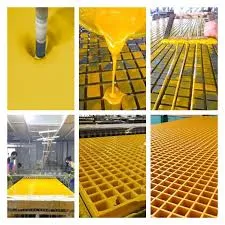
-
 Afrikaans
Afrikaans -
 Albanian
Albanian -
 Amharic
Amharic -
 Arabic
Arabic -
 Armenian
Armenian -
 Azerbaijani
Azerbaijani -
 Basque
Basque -
 Belarusian
Belarusian -
 Bengali
Bengali -
 Bosnian
Bosnian -
 Bulgarian
Bulgarian -
 Catalan
Catalan -
 Cebuano
Cebuano -
 China
China -
 China (Taiwan)
China (Taiwan) -
 Corsican
Corsican -
 Croatian
Croatian -
 Czech
Czech -
 Danish
Danish -
 Dutch
Dutch -
 English
English -
 Esperanto
Esperanto -
 Estonian
Estonian -
 Finnish
Finnish -
 French
French -
 Frisian
Frisian -
 Galician
Galician -
 Georgian
Georgian -
 German
German -
 Greek
Greek -
 Gujarati
Gujarati -
 Haitian Creole
Haitian Creole -
 hausa
hausa -
 hawaiian
hawaiian -
 Hebrew
Hebrew -
 Hindi
Hindi -
 Miao
Miao -
 Hungarian
Hungarian -
 Icelandic
Icelandic -
 igbo
igbo -
 Indonesian
Indonesian -
 irish
irish -
 Italian
Italian -
 Japanese
Japanese -
 Javanese
Javanese -
 Kannada
Kannada -
 kazakh
kazakh -
 Khmer
Khmer -
 Rwandese
Rwandese -
 Korean
Korean -
 Kurdish
Kurdish -
 Kyrgyz
Kyrgyz -
 Lao
Lao -
 Latin
Latin -
 Latvian
Latvian -
 Lithuanian
Lithuanian -
 Luxembourgish
Luxembourgish -
 Macedonian
Macedonian -
 Malgashi
Malgashi -
 Malay
Malay -
 Malayalam
Malayalam -
 Maltese
Maltese -
 Maori
Maori -
 Marathi
Marathi -
 Mongolian
Mongolian -
 Myanmar
Myanmar -
 Nepali
Nepali -
 Norwegian
Norwegian -
 Norwegian
Norwegian -
 Occitan
Occitan -
 Pashto
Pashto -
 Persian
Persian -
 Polish
Polish -
 Portuguese
Portuguese -
 Punjabi
Punjabi -
 Romanian
Romanian -
 Russian
Russian -
 Samoan
Samoan -
 Scottish Gaelic
Scottish Gaelic -
 Serbian
Serbian -
 Sesotho
Sesotho -
 Shona
Shona -
 Sindhi
Sindhi -
 Sinhala
Sinhala -
 Slovak
Slovak -
 Slovenian
Slovenian -
 Somali
Somali -
 Spanish
Spanish -
 Sundanese
Sundanese -
 Swahili
Swahili -
 Swedish
Swedish -
 Tagalog
Tagalog -
 Tajik
Tajik -
 Tamil
Tamil -
 Tatar
Tatar -
 Telugu
Telugu -
 Thai
Thai -
 Turkish
Turkish -
 Turkmen
Turkmen -
 Ukrainian
Ukrainian -
 Urdu
Urdu -
 Uighur
Uighur -
 Uzbek
Uzbek -
 Vietnamese
Vietnamese -
 Welsh
Welsh -
 Bantu
Bantu -
 Yiddish
Yiddish -
 Yoruba
Yoruba -
 Zulu
Zulu
Key Equipment and Strategies for Improving Safety in Coal Mining Operations
Essential Tools for Working in Coal Mines and Enhancing Safety
Coal mining, a crucial industry that powers economies across the globe, involves various challenges related to safety and efficiency. To navigate the complexities of underground work while ensuring worker safety, several essential tools and technologies have developed over the years. This article discusses some of the vital tools available for coal miners and highlights how these innovations contribute to a safer working environment.
1. Personal Protective Equipment (PPE)
The cornerstone of safety in coal mining begins with Personal Protective Equipment (PPE). Workers are required to wear helmets, safety glasses, gloves, and steel-toed boots to protect against falling objects, electrical hazards, and slips. Additionally, high-visibility vests ensure that miners are visible to one another in the dimly lit environment of underground mines. Respirators are also crucial for eliminating harmful dust particles, particularly coal dust, which can lead to chronic respiratory conditions such as pneumoconiosis.
2. Communication Devices
Effective communication is paramount in coal mining operations due to the often chaotic and noisy environment. Walkie-talkies and two-way radios are essential tools that enable miners to communicate over long distances. In addition, advanced technology such as mine-wide communication systems ensures that critical information reaches all personnel promptly. This real-time communication significantly reduces the risk of accidents and enhances coordination, especially during emergencies.
3. Ventilation Systems
Proper ventilation is crucial in underground coal mines to maintain air quality and minimize the risk of explosion due to gas accumulation, particularly methane. Ventilation systems, including fans and ducting, are employed to circulate fresh air and expel harmful gases. Innovations in ventilation technologies, such as adjustable fans and automated monitoring systems, help maintain optimal airflow, enhancing both safety and efficiency in the mining process.
essential tools for working in coal mines and enhancing ...

One of the significant hazards in coal mining is the risk of ground collapses. To mitigate this, miners use various ground control tools such as bolting machines and rock drills. These tools install bolts or anchors to strengthen the mine roof and walls, ensuring stability. Technologies like ground penetrating radar (GPR) can also be employed to assess geological conditions before excavation, allowing miners to make informed decisions and avoid potentially hazardous areas.
5. Continuous Miners and Shuttle Cars
Automatic and semi-automatic machines, such as continuous miners and shuttle cars, play a pivotal role in modern coal mining. Continuous miners are equipped with sharp, rotating drum-like features that cut through coal seams, allowing for efficient extraction. Shuttle cars transport the mined coal to conveyor belts or the surface. By reducing the need for manual labor in perilous environments, these machines significantly enhance safety and productivity.
6. Safety Monitoring Systems
Advanced technologies are revolutionizing the way safety is monitored in coal mines. Real-time monitoring systems can track air quality, structural integrity, and equipment performance. These systems can detect dangerous conditions early, allowing miners to evacuate before an incident occurs. Wearable technology, such as smart helmets equipped with sensors, also provides data on workers’ health and environmental conditions, ensuring that miners are not exposed to harmful environments for extended periods.
Conclusion
Coal mining remains an essential industry, but it is not without its risks. By incorporating essential tools and safety systems, the industry strives to protect the well-being of workers while maintaining efficiency. As technology continues to evolve, we can expect even greater advancements in mining safety and operational effectiveness, paving the way for a safer and more productive future in coal mining.
Latest news
-
Exploring the Benefits of Top Hammer Drifter Rods for Enhanced Drilling PerformanceNewsJun.10,2025
-
High-Precision Fiberglass Winding Machine for GRP/FRP Pipe Production – Reliable & Efficient SolutionsNewsJun.10,2025
-
FRP Pipes & Fittings for Shipbuilding - Corrosion-Resistant & LightweightNewsJun.09,2025
-
Premium FRP Flooring Solutions Durable & Slip-ResistantNewsJun.09,2025
-
Premium Fiberglass Rectangular Tanks Durable & Lightweight SolutionNewsJun.09,2025
-
Tapered Drill String Design Guide Durable Performance & UsesNewsJun.09,2025









